The introduction tolord broers freng frsthis guide makes clear
Front cover picture credits:
WEEE man (top left)
The RSA WEEE man is an environmental awareness initiative developed by the RSA (Royal Society for the encouragement of Arts, Manufactures and Commerce) and Canon Europe – and is a visual reminder of the amount of waste electrical and electronic equipment (WEEE) one UK citizen will generate in a lifetime.© Newtownabbey Borough Council and University of Ulster
Motorway car picture (bottom right)
© Highways Agency.September 2005
Published by
The Royal Academy of Engineering
29 Great Peter Street, London, SW1P 3LW
Professor Richard Dodds FREng
Visiting Professor in the Faculty of
Engineering, University of LiverpoolProfessor Roger Venables
Managing Director, Crane Environmental Ltd
and Visiting Professor in the Faculty of
Engineering, Queen’s University, Belfast
Friends of the Earth
|
|---|
(published by the Engineering Council UK)
| 2 |
|
|
|---|---|---|
The practice of design has also concerned the Academy for many years. In keeping with its mission of encouraging excellence in the practice of engineering,The Royal
Academy of Engineering has, since 1998, operated a scheme for the appointment of Visiting Professors in Engineering Design for Sustainable Development at universities in the UK, with a total of 26 appointments made so far.The principal aims of the Scheme are to assist – across all engineering teaching, not just design – in the generation of teaching materials for the undergraduate curriculum based on real-life case studies, and to enhance the understanding of sustainability and sustainable development amongst academic staff and students alike.The result we seek is that graduates leave their courses inspired by, and with
understanding of, both the concept of sustainable development and the place of their chosen engineering specialism in delivering it, and with relevant knowledge and skills to apply in the engineering profession.
Our thanks are due to a wide range of people involved in the
preparation of this Guide, and in
teaching and practice of engineering for sustainable development. In
particular, we thank Professor Jim
McQuaid,Visiting Professor in the
School of the Built Environment,
University of Ulster, and Professor
David Fisk, Department of Civil and Environmental Engineering, Imperial College, London, for their tireless
work in developing early drafts as well as commenting on the later
drafts of this Guide.We also give
special thanks to Professor Roland Clift of the University of Surrey for his significant contribution to the
Introduction.Each of the Visiting
Professors who have contributed to the examples presented in Section 2 is indicated at the head of each
example.In addition,we gratefully
acknowledge the contributions of
text and/or comments by members of the Academy’s Sustainable
Development Education Working Group, plus other members of The Academy and wider profession.Further information on some of the case study material generated by
The Academy’s scheme can be
found from the References, including the websites listed there.• students on engineering undergraduate and post-graduate degree courses
• teachers in Universities in related disciplines, with which engineers have to work
The overall structure of the Guide is as follows.
• Section 1 provides an Introduction to the Guide and why it has been produced, plus some fundamental definitions, which – it is hoped – provide sufficient background to sustainability, sustainable development and their interactions with engineering, even for those new to the subject
The longer-term aim is for this Guide to be a key component of resources to assist, in particular, academic staff who are teaching on UK engineering degree courses.
This Guide can be seen as complementary to the existing Royal Academy of
Engineering Guide Educating Engineers in Design (The Royal Academy of Engineering, 2005) and to the Academy’s Report, The Societal Aspects of Risk and its companion documents (The Royal Academy of Engineering, 2003). It should assist in delivering the sustainable development competencies required by the UK Standard for Professional Engineering Competence. (Engineering Council UK, 2004).
| 4 |
|---|
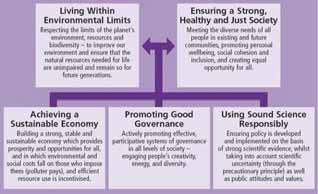
Figure 1:The principles of sustainable development in the 2005 UK strategy ‘Securing the future’
1.1 Why Engineering for Sustainable Development?
It is increasingly recognised, in public discussion and political discourse, that many of the practices and lifestyles of modern society – particularly but not exclusively industrialised society – simply cannot be sustained indefinitely.We are exceeding the capacity of the planet to provide many of the resources we use and to accommodate our emissions, while many of the planet’s inhabitants cannot meet even their most basic needs.
|
Natural resources |
|
|
|---|---|---|---|
| and ecological | |||
| capacity | |||
| SUSTAINABILITY | |||
| CONCERNS | |||
| systems | |||
|
Figure 2a:Three dimensions of sustainability
Sustainability can be thought of as the region in the centre of Figure 2a where all three sets of constraints are satisfied, while sustainable development is the process of moving to that region. Alternatively, sustainable development can be thought of as the process
Although Figure 2 is simplistic, it reminds us that sustainability means living within all three types of long-term constraint: technology cannot be deployed as though it has
|
|---|
Engineers will still be called on to design and manage complex systems, or simple systems to meet complex sets of demands. However, sustainable development redefines the contexts within which these skills must be deployed. It is a new
integrative principle, not a new set of tools, so that the concept cannot simply be regarded as an ‘add-on’to existing engineering skills and educational programmes.This
| • | ||
|---|---|---|
|
|
This holistic and whole-life view of engineering serves a dual purpose.
• For the audience of academic staff, students and engineers in practice, it provides the overall framework within which engineering design practice has to fit. It emphasises that, for sustainable development to be achieved, professional practice in engineering needs urgently to have a wider compass than the development of elegant solutions to narrowly specified technical problems
One of the reasons for the plethora of definitions is that ‘sustainability’and ‘sustainable development’are very rich concepts.The philosopher Michael Banner (1999) has likened them to justice, which has been recognised as an important ethical principle since at least the time of the Athenian republic, but which has never been capable of one succinct definition. However, that does not mean we should ignore the concept. It is therefore very important for engineers to gain a feel for sustainable development so that, as with concepts like justice, they can recognise it as a guiding principle to be interpreted for each instance in which the principle is needed.
The goal is sustainable living – being able to live on Planet Earth for the indefinite future –but recognising our impact on other people inhabiting the planet both now and in the future,indeed many generations in the future.This is why some authors and politicians have referred to sustainable development in terms such as ‘We don’t own the earth;we hold it in trust for our children’(and,we should add,our grandchildren,and their children, and…).This is sometimes known as the principle of inter-generational equity.
The five forms of capital that determine the options available to future generations are:
| 10 |
|
|---|
Engineering for Sustainable Development
• Walking the talk: embedding sustainable development into an organisation – Glasgow University
|
|
|---|
|
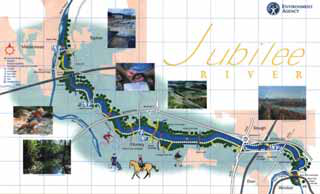 |
the control of excavation machinery, | |
|---|---|---|---|
|
|||
| excavation, and thus minimisation of | |||
| • | |||
| material for beneficial use elsewhere | |||
|
|||
|
|||
|
|
|||||
|---|---|---|---|---|---|---|
| some unexpected erosion occurred.The | • | |||||
| • |
|
|||||
| investigated and include consideration of |
|
 |
||||
| • | ||||||
|
||||||
| underline the clear need, when adopting | • |
|
||||
| a sustainable development approach, to | ||||||
|
|
|||||
| for itself and others. Although the balance | ||||||
|
||||||
| social performance is still being studied, it | ||||||
| the Environment Agency as client of the | ||||||
| Scheme tried to deliver what they try to | 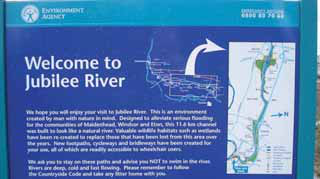 |
|||||
|
||||||
| • |
|
|||||
| • | an enhanced environment for wildlife | |||||
| • |
|
|||||
| • | ||||||
| • | ||||||
2.2 Chemical and Manufacturing Engineering – laundry cleaning products
Richard Dodds,Visiting Professor in the Faculty of Engineering,University of Liverpool
Engineering for Sustainable Development
2.3 Walking the talk: embedding sustainable development into an organisation – Glasgow University
Barbara Carroll,Visiting Professor in the Faculty of Engineering,University of Glasgow
| Picture courtesy of University of Glasgow | 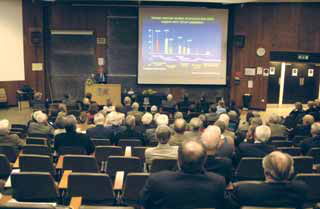 |
||||||
|---|---|---|---|---|---|---|---|
| activities of communities and to personal | |||||||
| lifestyles.It thus applies to the running of all | |||||||
| types of organisation,including universities. | |||||||
| University, where the The Royal Academy | |||||||
| of Engineering Visiting Professor and her | |||||||
|
|||||||
|
|||||||
| of sustainable development in the running | |||||||
| increasing attention within universities to | |||||||
| the subject of sustainable development, | |||||||
|
|
||||||
| run, what they teach and how. Another is | |||||||
| • | |||||||
|
|||||||
|
|||||||
| • | development as an essential component | ||||||
| engineering education and sustainable | |||||||
| literacy in teaching, research, operations |
|
||||||
|
|||||||
| and outreach at colleges and universities, | |||||||
| including the city and its inhabitants | • | ||||||
| to which Glasgow University is already a | |||||||
| • | |||||||
|
|||||||
|
|||||||
| Governors at Manchester University has | |||||||
| • | |||||||
|
|
• | |||||
|
|||||||
| external business development group, | |||||||
| • |
|
||||||
|
|||||||
|
|||||||
| • | embedding sustainable development | ||||||
|
|
||||||
| - | |||||||
|
|||||||
| • |
|
||||||
| - | |||||||
|
|
||||||
| • | - | ||||||
minimisation.The Sustainable Development
|
|||
|---|---|---|---|
|
|||
| • | workshops with academic staff to raise | ||
| • | analysis of civil engineering courses to | ||
| identify those that already include, | |||
|
|||
| sustainable development principles | |||
|
|||
| • | |||
18 |
Love them or hate them, you can’t ignore | 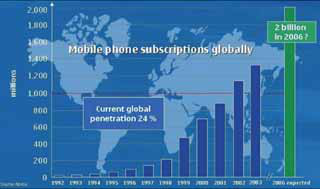 |
||
|---|---|---|---|---|
| them – mobile phones that is.The mobile | ||||
|
||||
| global phone subscriptions is still growing | ||||
|
||||
| mobile phones were sold globally in 2003 | ||||
| and estimates for 2004 showed this figure | ||||
|
||||
|
||||
| Equipment (RoHS) – the whole life-cycle | has recently completed an in-depth study | |||
| of mobile phones is under more scrutiny. | ||||
|
|
|||
| investigating their life-cycle impacts.With |
|
|||
|
||||
| Nokia, a leading mobile phone producer, | ||||
| Equipment (WEEE) and on the Restriction | where possible, a market-driven approach, | |||
| has been evaluating the life-cycle impacts | ||||
|
||||
|
||||
| are integrated’.The work has been carried | ||||
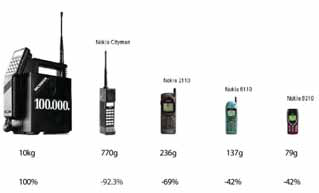 |
||||
|
|
|||
|
|
|||
|---|---|---|---|---|
| environmentally relevant chemicals used | ||||
| influencing the buying, usage and disposal | ||||
|
||||
| management of disposed mobile phones; | ||||
|
||||
|
||||
|
||||
| 20 | ||||
|
||||
|
||||
| (re)constructing and facilitating the mill | ||||
|
regeneration were carried out by a team | |||
|
||||
| environment.The case study,Mossley Mill – | who embraced sustainable development | |||
|
||||
|
||||
| view of their old buildings, in contrast to | ||||
|
|
|||
| efficient yet high profile manner. Against | ||||
| this backdrop, this study involved several | ||||
|
||||
|
a legislative framework, while links to the | |||
| was selected as the preferred site option. |
|
|||
|
||||
| The specific findings were developed into | ||||
|---|---|---|---|---|
|
||||
| • |
|
|||
| level areas for possible integration and for | ||||
|
Those key findings were categorised into |
|
||
| such as water usage, energy reduction and | ||||
| • | ||||
| • |
|
|||
| leading to the selection of the Forum |
|
|||
|
|
|||
|
|
|||
| product and process.The product output | ||||
|
||||
|
||||
| • | ||||
| transport access, centralised services |
|
|||
|
||||
|
||||
|
||||
|
||||
|
• | |||
| facilities, revenue return from sale or | ||||
|
||||
|
||||
| facilities, use of local and/or durable | ||||
|
|
|||
|
|
|||
|
||||
21
| palladium and rhodium).About 3 grams of | • |
|
|---|
| 24 |
|
|
||
|---|---|---|---|---|
| energy are available from geothermal and | ||||
|
||||
|
||||
|
|
|||
| In total, the renewable sources of energy |
|
|||
|
emissions. Hydrogen is a possible future | |||
| energy with significantly reduced environ- |
|
|
||
|
|
|||
| urban driving conditions.The series hybrid | storage it could be near to a ‘zero carbon’ | |||
|
|
|||
|
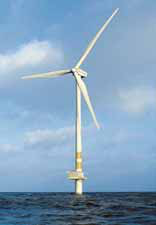 |
|
||
| alternative energy strategies and futures. | ||||
|
||||
| alternatives.The costs of all the conversion | there are a number of paths to stabilising | |||
| technologies are falling, but a number of | global carbon dioxide emissions by 2050, | |||
|
without creating an unacceptable burden | |||
| on national economies. All stakeholders – | ||||
| based global energy system to a primarily | energy companies, NGOs and individual | |||
| renewable system will take many decades | ||||
|
|
|||
| and policies.The key question is whether | ||||
| the political will can be found to take the | ||||
|
||||
|
The 12 Principles of Engineering for Sustainable Development are:
3.2 The Principles explained
Principle 1 – Look beyond your own locality and the immediate future
25
Un-sustainable development or product manufacture can result from an action that, while based on trying to act sustainably in a local context, creates more severe development problems or social and environmental effects in a broader context, either immediately or in the future.
• alternative solutions can be identified that fit with the sustainable development approach
• it is very difficult to predict with certainty how these alternatives will work into the future, so we need to provide options and flexibility for change and other action in the future
|
||
|---|---|---|
|
||
| the frequency of extreme weather. |
Engineering for Sustainable Development
| • |
|---|
Principle 5 – Make sure you know the needs and wants
Effective decision-making in engineering for sustainable development is only possible when we know what is needed or wanted – the framework of the problem, issue or challenge to be tackled.This should be identified as clearly as possible, including identifying any legal requirements and constraints.We should use teamwork and assistance of immediate colleagues to improve problem definition.
• communicate the engineering opportunities and constraints to the team and stakeholders, and explain any value judgements about engineering aspects that are included in the framing
• use an appropriate template for your approach from those available – such as the three pillars or five capitals, and consider time as well as space – to ensure that a broad scope and range of options is considered initially, avoiding the trap of narrowing down to one technological solution too quickly
• express our aims in sufficiently open-ended terms so as not to preclude the potential for innovative solutions as the project develops
• assemble and critically review historical evidence and forward projections, and weigh the evidence for relevance and importance to the plan
• ensure that the effort and resources devoted to avoiding un-sustainable development remains in proportion to the anticipated effect – don’t use a sledgehammer to crack a nut
• keep the plan straightforward, so others can understand it
• act with caution where we consider that the effects of our decisions may be permanent and/or if we do not have a full scientific understanding of the issue or challenge being considered
| • | only discount the disadvantages and benefits of future events or impacts when they | ||
|---|---|---|---|
|
|||
| • |
|
||
|
|||
• avoid incurring the costs in the first place by eliminating or minimising adverse environmental effects
|
|---|
Principle 9 – Adopt a holistic,‘cradle-to-grave’ approach
To deliver this approach, the effects on sustainability throughout the whole life-cycle of a product or infrastructure scheme should be systematically evaluated.We need to:
• ensure that the design is maintainable and that the materials are adaptable for re-use or recycling
• think in the fourth dimension and ensure that the design life is appropriate to the product or project and its context
Adhering to the Principles explained so far should ensure that right decisions from a sustainability point of view have been made in relation to the circumstances that apply. The implementation of these right decisions must then pay full regard to doing things right, again from a sustainability point of view.To deliver this Principle, we need to:
• retain the sustainability focus on the intended outcome right through the implementation of the solution
Principle 11 – Beware cost cutting that masquerades as value engineering
We are unlikely to arrive at our best decisions first time every time. So we need to challenge ourselves and refine those decisions, whilst remaining focused on the intended outcome.We therefore need to:
| • |
|---|
• however regrettable it may be, accept that an even better solution may have to await the creation of the next plant or piece of infrastructure
Finally, if satisfied with the balance struck between the economic, environmental and social impacts of the proposed solution, congratulate yourself. If not… change it.
Section 4, after the table, provides guidance on how the Principles can be applied to engineering projects and operations, through the main stages through which engineering projects pass.
31
|
|
|
|||
|---|---|---|---|---|---|
|
|
||||
|
|
|
|
||
|---|---|---|---|
|
|||
|
33
| 34 |
|
|---|
Engineering for Sustainable Development
35
|
|
|
|||
|---|---|---|---|---|---|
|
---- | ||||
|
|
||||
|
| 38 |
|---|
Engineering for Sustainable Development
|
|
||
|---|---|---|---|
----
|
|||
| ✓ |
|
✓ | |
| ✓ |
|
✓ | |
| ✓ | ✓ | ||
| ✓ |
|
|---|
Decision-making in engineering, whether in the design of a process or product, in the provision of infrastructure, or in the management of an engineering enterprise, takes place throughout the life-cycle of that process, product, infrastructure or enterprise. There is a range of models for the study of such a life-cycle of decision-making.The one chosen to be used here is divided into five main stages:
Actual impacts on future development (compared to predicted impacts) occur once the Implementation, Delivery and Operational Stage is entered. It is crucial to the successful delivery of sustainable development to realise that this and subsequent stages always benefit from a rigorous consideration of sustainable development issues at earlier stages. It is, however, also crucial to recognise that, from the Implementation, Delivery and Operational Stage onwards, earlier sustainable approaches are extremely vulnerable to being overturned through short-sighted responses to unforeseen difficulties and resource constraints.The principles of sustainable development therefore have to be applied at every stage in an engineering decision and its
implementation.The relationship between the Principles and the five stages is presented in a table at the end of this section.
| 40 |
|---|
other end of the scale of engineering projects, they may simply be done in the early stages of an otherwise seamless design process.
Increasingly, there is also a need to consider carefully what it is acceptable to build or manufacture.This may also lead to a recognition that the client or customer for the engineering design may not be able to accommodate a substantial leap in design thinking to accept a full sustainable development approach. Some aspects of such an approach may, from a pragmatic standpoint, therefore need to be included in ‘the plant (or product) after next’.There is a danger here, however, that insufficient urgency will be engendered for the need for change.
Planning can usefully be characterised as the analytic process that precedes taking action, which includes appraisal of the options available, creating the objectives that would indicate success and a means of meeting them.
Detailed design then involves the creation of solutions, product or process designs, or infrastructure designs that meet all the diverse but connected requirements – fitness for purpose, safety, quality, value for money, aesthetics, constructability, ease of use and material efficiency. It does so alongside the minimisation of adverse environmental and social impacts, the enhancement of the environment where possible, and the
enhancement of quality of life for consumers, workers and neighbours alike.This is a substantial challenge for engineering designers but one that can – with careful thought, creativity, innovation and determination – be delivered for society’s benefit.
care was taken to ensure that the strong environmental case for this new product format was recognised and developed in parallel with the normal product development tasks.
|
|---|
At Glasgow University where,
because it takes time to promote and implement an SD Strategy
throughout an organisation,
implementation is needing
persistent and patient persuasion, with demonstration of the necessity to embed sustainable development in University practices.Without such persistence and persuasion, earlier decisions in principle may not be
| SD approach at the End of |
|---|
|
|---|
4.5 Implementation, Delivery and Operations
The waste hierarchy must be applied:
| 42 |
|---|
Engineering for Sustainable Development
4.7 Linking the Stages to the
Guiding Principles
• one star = a definite connection between stage and Principle, but of low priority;
• three stars = Principle not the highest priority, but nevertheless important for the
5 Make sure you
know the needs
and wants6 Plan and manage
effectively11 Beware cost
cutting that
masquerades as
value engineering12 Practice what you
preach
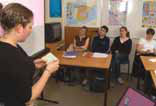 |
||
|---|---|---|
| The original aim of the Visiting Professors Scheme was to embed the topic of Enginee- | ||
|
||
| separate subject.The range of options for teaching the subject is therefore very wide, | ||
| and there is no prescribed approach.The experience of introducing the topic into the |
Engineering Department at Cambridge University has been published and contains useful lessons (Fenner, 2004).
• use imagination,creativity and innovation to provide products and services which maintain and enhance the quality of the environment and community,and meet financial objectives
• understand and encourage stakeholder involvement”
• to be able to identify and know how to implement any design changes to counteract the negative impacts.”
The following four steps are suggested as one way of generating the required capability.
Thirdly, all teaching modules – and particularly for design teaching and projects – could be reviewed for their content on or relationship to the concept and practice of
sustainable development.This may lead to a wide range of amendments, from very modest yet important additions, for example the inclusion of sourcing of materials, to more major revision, such as the addition of resource efficiency and waste minimisation to a module that does not currently cover these matters explicitly.Fourthly, these issues could be brought together in the significant projects – whether undertaken in teams or individually – carried out during the final years of under-graduate degree courses. Alongside the in-depth technology work of the project, the resulting product, process or system should be framed in a sustainable development context.This might, for example, then gain up to 5% of their marks in a 300-hour task, or rather more if sustainable development is the prime focus of the project.
| implications for them of the sustainable development requirements of the UK Standard | Picture: Crane Environmental Ltd | ||
|---|---|---|---|
| for Professional Engineering Competence (Engineering Council UK, 2004) given above, and | |||
|
|||
|
|||
| the contribution of engineering to meeting the challenges of sustainable development. | |||
| • |
|
|
|
• above all, courses and teaching need to inspire every student and participant to make a difference to the world through sustainable development based upon wise practice of engineering
45
Mossley Mill – Case Study written up by W Alan Strong & Lesley Hemphill, with the support of Newtownabbey Borough Council and Ostick & Williams (Achitects). See http://engj.ulster.ac.uk/sdg.
Other references in the text and further reading
Azapagic et al, 2004, Sustainable Development in Practice: Case Studies for Engineers and Scientists, Adisa Azapagic (Editor), Slobodan Perdan (Editor), Roland Clift (Editor), ISBN: 0-470-85608-4
Banner, Michael, 1999, Christian Ethics and Contemporary Moral Problems, Cambridge University Press
Birley,Tim, 2001, Reality Check – A review of Scottish Executive activity on sustainable development, A report to WWF Scotland Boyle, 2003, Energy Systems and Sustainability, Ed G. Boyle, Oxford University Press, ISBN 0-19-926179-2
Boyle, 2004, Renewable Energy, Ed G. Boyle, Oxford University Press, ISBN 0-19-926178-4
BP plc, 2005, Statistical Review of World Energy 2005, available on www.bp.com
Brown, Lester, 1994, Principles of Sustainability,Vital Signs 1994. New York:W.W. Norton and Co.
Additional Websites not referred to above
http://portal.unesco.org/ev.php?URL_ID=1071&URL_DO=DO_TOPIC&URL_SECTION=201&reload=1045842260 (UNESCO Portal for Sustainable Development)
www.arup.com/sustainability/skill.cfm?pageid=4929
(SPeAR™, Sustainable Project Appraisal Routine, a project appraisal methodology, to be used as a tool for rapid review of the sustainability of projects, plans, products and organisations)
www.bedzed.org.uk (Beddington Zero Energy Development)
www.bestfootforward.com (tools to measure and communicate environmental impact and sustainability, including an environmental measurement methodology called EcoIndex™)
www.ciria.org/cief_intro.htm (CIEF, the Construction Industry Environmental Forum, which helps companies involved in construction improve their environmental and sustainability performance)
www.clubofrome.org
www.concretecentre.com/main.asp?page=155 (for The Concrete Centre's work on sustainability
47
| 48 |
|---|





